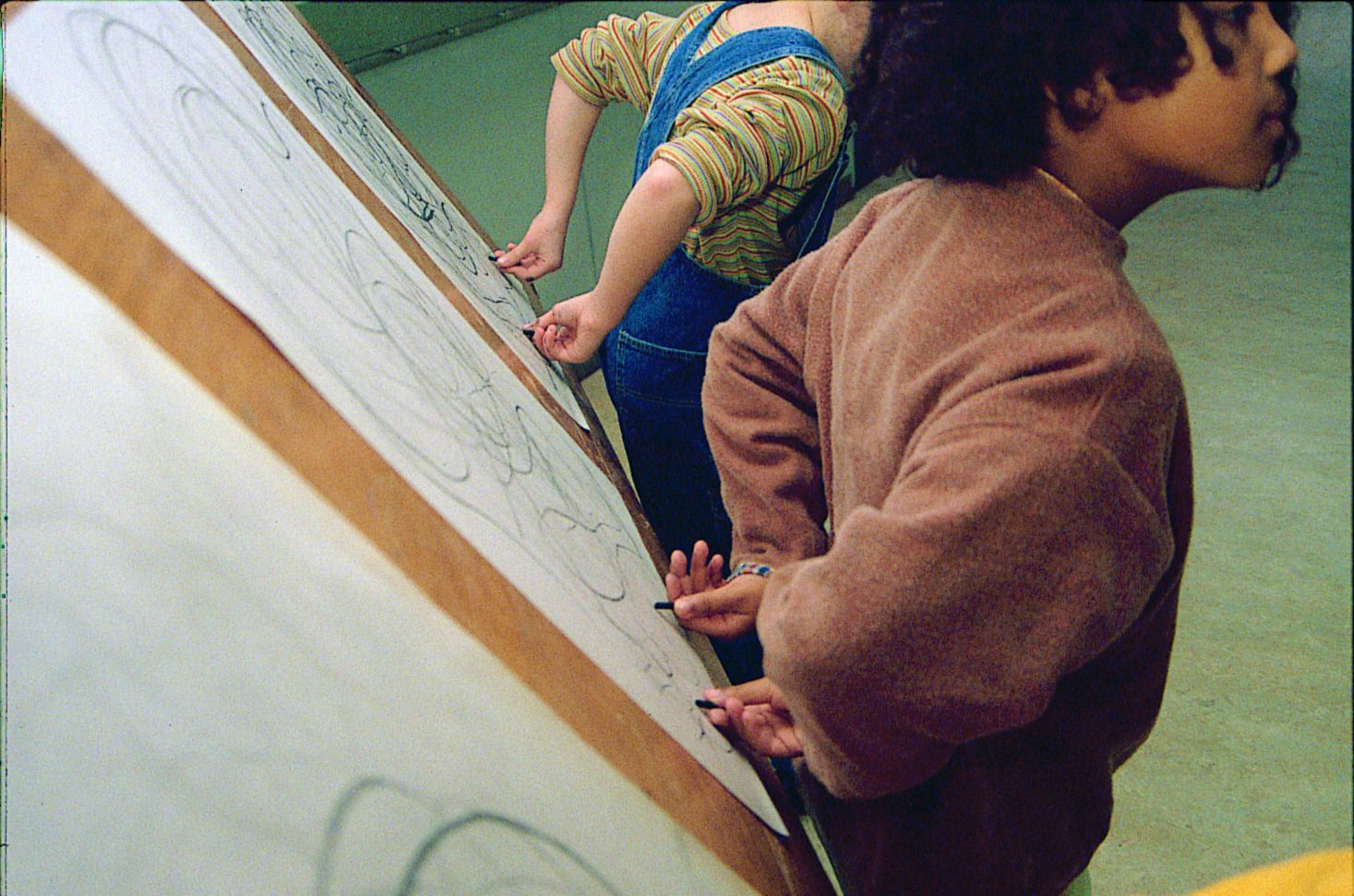Basic drawing movement …. an example exercise

Aim
Expressing and simultaneously releasing tension (stress) and letting peace and contentment develop through a swaying movement. In the book the Timeless Hour this is called P.L.R.S. it is an abbreviation of ‘promotion of the link between left and right hand sides of the brain’.
This swaying movement slows down the brain waves and they change from beta to alpha and sometimes to the even slower theta waves. Internal as well as physiological processes now occur within the brain, enabling stress within the child to be released through the drawing movement. This movement has a stabilizing and harmonizing effect (balance). It also increases the flow through the corpus callosum to both sides of the brain, through the swaying and the co-ordination of the left and the right hand. This makes the child better able to take in and understand the subject mater in classes such as arithmetic and reading and other exact subjects.
Materials
Paper: 65 x 50 cm, 160 grams
Charcoal: 2 pieces of charcoal for each child, which they break into 6 pieces of approx. 4,5 cm
Tape: tesa tape
Instruction
“You are standing in front of the drawing board. Your feet slightly apart so you are standing ‘comfortably’.You hold the piece of charcoal loosely with both hands. Your hands do not need your eyes. First with your eyes open you no longer look at the drawing paper but straight ahead or with your head tilted slightly upwards.
With both hands make all kinds of drawing movements that occur to you over the whole area of the paper. Left, right, simultaneously or in turns. Your hands feel which movements they want to make. While you are doing this, you gradually start swaying your body. You transfer your body weight from one foot to the other and back again. You notice how first one heel loses touch with the floor and then the other one (without your specifically lifting your heel). Now and then move your feet a little so you remain mobile.
Your hands move freely over the paper. Draw at your own speed and feel when your hands want to draw large or small. Trust your hands, they can do everything on their own. Now close your eyes, but … continue drawing.”
“Stay in the drawing movement a while longer. Open your eyes very slowly in the direction of your hands. Your hands continue drawing while
you move like “a reed in the wind”.
At the end of the exercise you can tell the children the following:
“Now gently and carefully drop the pieces of charcoal on the floor. Now lightly rubbing, move both hands over the paper covered with charcoal, sometimes only with your fingertips, sometimes with your whole hands. Now and then press your hands firmly against the paper … sometimes rubbing and sometimes not rubbing… so your hands occasionally can rest completely still on the paper …….. this is the end of the exercise.”
Additional information:
You do not have the children do this rubbing in the layer of charcoal and resting of hands if you want them to use the black charcoal on the top sheet to subsequently do exercise 9.1 ‘the stencil drawing’.
Supporting instructions
Remarks you can say during the exercises to promote the body and emotional experiences of the children:
“Let go when you’re breathing out”
“Relax your eyes …….. your eyebrows and your forehead by letting the muscles there go very limp”
“Feel your feet”
“Draw in your toes as if you were picking up a pebble with them and release them again”
Only if the child is drawing with one hand:
“Let the arm that is not drawing hang loosely and relaxed alongside your body”

General guiding instructions for the group as a whole:
“Let the movements speed up (or slow down)”
… and after a while: “Let the movements grow bigger or smaller”
… and after a while: “Draw with the charcoal with more or less pressure with your fingers”
If you suspect they are having many thoughts, you say:
“Listen to the sound you are making with your charcoal on the paper”.
